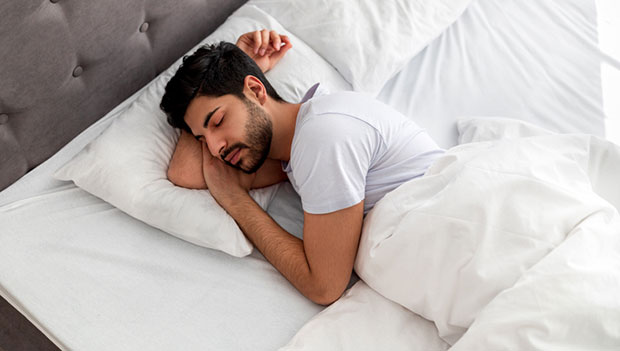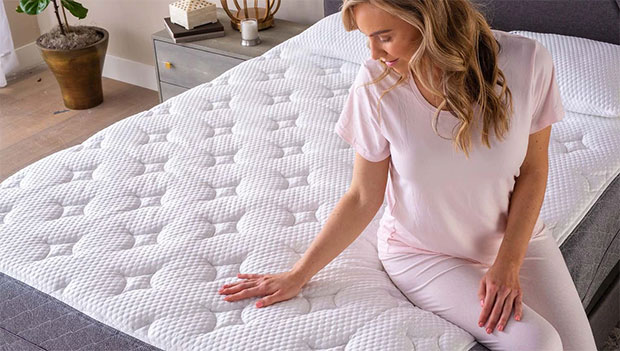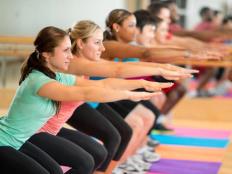
Sleep is extremely important for performance, learning, development, and physical and mental health. Too little sleep can lead to poorer performance and decision-making ability, alongside reductions in muscle recovery and immune function. In order to perform our best, not only must we train regularly and eat healthy foods, but obtaining adequate rest and recovery is vital.
[By clicking on the product links in this article, we may receive a commission fee at no cost to you, the reader.]
Sleep is no exception! Creating an appropriate sleeping space, which includes a cool, dark space and a mattress that can increase blood flow and regulate core temperature, such as an infrared mattress, is a key step to improving the quantity and quality of your sleep.
Why Trust Me?
I am a lecturer and researcher in the School of Medical and Health Sciences at Edith Cowan University, Western Australia. I have a Ph.D. in exercise physiology and have published several peer-reviewed research papers examining methods to improve recovery, including the use of compression garments, dietary supplements, and low-level laser therapy.
What is REM sleep?
REM, or rapid eye movement, is a phase of sleep characterized by the most obvious behavior: fluttering (or rapid) eye movement. During REM sleep your brain is highly active, which might explain why you do most of your dreaming during this phase. Your heart rate also increases and your breathing rate becomes irregular. To ensure you don't actually act out any of your dreams, your body relaxes and you experience a temporary loss of muscle tone. Think of it as a protective mechanism so you don't injure yourself during your dreams.
When does REM sleep occur?
Your first cycle of REM sleep occurs 90 minutes after falling asleep. As part of a typical sleeping pattern, you cycle through four stages of sleep: three cycles of non-REM sleep followed by one cycle of REM sleep. This pattern is repeated every 90-120 minutes, with the majority of your REM sleep occurring in the latter half of the night.
How much REM sleep do adults need?
General recommendations for sleep include 7-9 hours of sleep for both psychological (ability to learn, motivation, and memory) and physiological (metabolism and inflammation) recovery. Not surprisingly, athletes require a greater quantity of sleep to recover from injury, intense training periods, and competition. All sleep is important, but REM sleep plays a critical role in dreaming, memory, healthy brain development, and recovery. During REM sleep, your brain processes new learnings and motor skills from the day, helping to commit some of them to memory. Recovery during sleep is promoted through the release of hormones, like growth hormone, which aids in muscle repair, muscle building, and bone growth. Melatonin, a hormone stimulated by darkness and released during the night, has a range of antioxidant properties which can influence recovery and health.
While infants and children require the most REM sleep since their brains and bodies are still developing, adults only need an average of 2 hours of REM sleep each night. A greater frequency and duration of REM sleep, however, is suggested to enhance the recovery process and lead to more optimal wakefulness.
Why is REM sleep beneficial to active adults?
Although there are many strategies to manage fatigue, stress, and recovery, sleep can contribute significantly to recovery from fatiguing events, including both cognitive and physiologically demanding tasks. Unfortunately, sleep deprivation is considered common among athletes, with sleep duration and sleep quality often neglected as a recovery tool to optimize performance.
Previous research has demonstrated significant decrements in performance following sleep deprivation, including reduced motivation, reduced cognitive processes, heightened levels of perceived exertion, and an increase in pain perception. As little as one night of sleep loss can significantly decrease performance in weightlifting, running, and cycling. Further, partial sleep loss can significantly alter mood state, leading to increases in depression, confusion, fatigue, and anger. Clearly, sleep is vital as it provides an opportunity for your body to recover from training and help prepare it for subsequent training or competition day.

How does REM sleep speed up muscle recovery?
Although our bodies are in a continuous cycle of growth and repair, these processes peak during sleep. During REM sleep, your body shifts its resources to repairing tissues like your muscles, while also giving a boost to your central nervous system to improve energy and function. If energy expenditure increases during the day, growth hormone levels rise during the night. In fact, more than 95 percent of the daily production of growth hormone occurs during sleep, where it is used to repair and restore your body's tissues. Sleep deprivation is a major stressor that can have significant detrimental effects on the growth and repair of your muscles, with research highlighting a significant fall in growth hormone levels following even just one night of disrupted sleep.
What happens to your body when you don't get enough REM sleep?
Previous research has highlighted how common it is for athletes to miss out on quality sleep. In a group of Olympic athletes, both sleep quantity and sleep quality (how many cycles of REM sleep they achieved each night) were significantly reduced compared to a control group of non-athletes. Additionally, among 632 German athletes surveyed, nearly one-third of them reported numerous waking experiences during sleep, and almost 80 percent of them reported difficulty falling asleep the night before a competition, leading to increased tiredness during the following day. In a group of South African athletes, 41 percent of athletes reported difficulty falling asleep, and 60 percent reported difficulty waking up. Evidently, athletes commonly struggle with achieving the recommended sleep volume and sleep quality to aid in performance and recovery.
How can I get better REM sleep?
Having a routine, where you are keeping your sleeping and waking times consistent will help to stimulate quality sleep. Improving sleep quality helps to enhance the transition through sleep stages, promoting the volume (or hours) of REM sleep and therefore optimizing recovery and wakefulness. The temperature of your sleeping environment can also influence the onset of sleep and the efficiency of the sleep stages. Warmer temperatures can reduce the time spent experiencing REM due to changes in your core temperature—this is why some people find it difficult to fall asleep in hot weather or after a very hot shower.
The onset of sleep normally occurs as blood flow to your skin increases, causing your core body temperature to lower. This increase in blood flow helps to accelerate the onset of sleep and is strongly associated with melatonin secretion. Interestingly, REM sleep occurs when your body temperature is at its lowest. Not surprisingly, temperatures above or below 84 degrees Fahrenheit (29 degrees Celsius) may disrupt your body's sleep pattern and prompt awakening. Therefore bedding, clothing, and room temperature must be considered to promote blood circulation and avoid contributing to an increase in core temperature which can disrupt your sleep.
How can infrared mattresses increase REM sleep?
These therapies have traditionally been administered via far-infrared saunas or lamps. Far infrared therapy (FIR) uses specific frequencies of light waves to elicit physical reactions that promote health and wellness in the body. FIR therapy can help increase blood flow and circulation, while helping to reduce joint and muscle pain and improve body temperature regulation.
For instance, a blanket containing FIR discs has been reported to improve sleep quality, and gloves made out of FIR-emitting fabrics have been reported to treat arthritis. A study investigating the sleep-modulatory effects of FIR found that participants who slept on a mattress embedded with FIR discs reported longer and deeper sleep and fewer wakeful episodes during the night, compared to a control group. Furthermore, in a study with 542 users, the majority of participants reported reductions in feelings of coldness, stiffness of muscles, and disordered sleep following several weeks of sleeping on a mattress with FIR discs.
Products with FIR-emitting minerals woven directly into textiles is another way this technology is being used, while GhostBed is the first to actually infuse their blend of minerals into gel memory foam mattresses. The minerals interact with your natural body heat all night, giving you the full health benefits of FIR therapy as you sleep.
Other Tips for Getting Better REM Sleep
Pre-sleep routines can also be used to promote sleep quality and quantity. Getting ready to go to bed in a dark, cool environment that is absent of noise is vital. High levels of anxiety can also disrupt your sleep routine. Goal setting, self-talk, and visualization therapy techniques can help to combat the effects of anxiety on sleep. When traveling, the use of eye masks and earplugs may help block out excess noise and light and enhance your ability to fall asleep. Avoid using a computer and watching television right before bed, and limit your caffeine consumption in the afternoon to avoid interruptions to your sleep. Lastly, if you're lucky enough to squeeze a nap in during the day, try to limit it to no later than midafternoon to maintain a routine sleep time.
Additionally, seven-time Grand Slam champion and sleep enthusiast Venus Williams offers the following five sleep tips for the fitness-minded:

- Find ways to sweat it out every day: The link between regular physical activity and sleep is so powerful! Besides just physically tiring you out, exercise is a great stress reliever, which can help you fall asleep faster. And after a solid night of quality sleep, you'll be ready to take on the day (and your next workout).
- Set your bedroom to 65-68 degrees F: Our body temperature naturally rises and falls throughout the night. Keeping the room on the cooler side helps your body regulate itself so you don't wake up overheated.
- Keep your bedroom completely dark: Even a nightlight or bright alarm clock can reduce melatonin production, which we need to fall and stay asleep. If your bedroom windows let in a lot of natural light, get blackout curtains or wear an eye mask.
- Stick to a sleep schedule: This will help your internal clock get used to a set routine, which can make falling asleep easier. (I've found this to be especially helpful while traveling!)
- Commit to a healthy and nutrient-rich diet: This can impact everything from your brain health to your day-to-day activities and your sleep. And keep the caffeine in check. If you’re looking for an afternoon pick-me-up, try snacking on some cherries, taking a brisk walk, or making a protein-packed smoothie or shake.
Get ACTIVE on the Go


Couch to 5K®
The best way to get new runners off the couch and across the finish line of their first 5K.
Available for iOS | Android








Discuss This Article